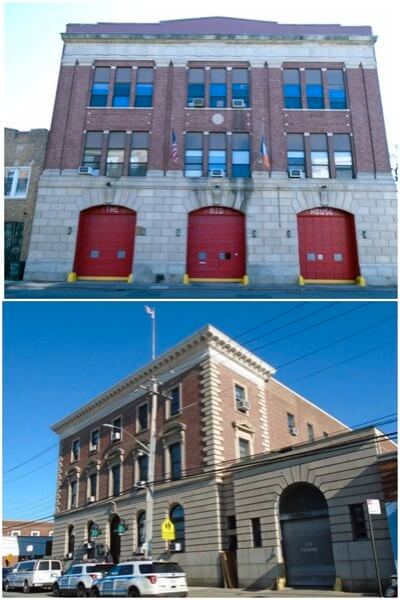By Naeisha Rose
The city’s Landmarks Preservation Commission held a public hearing Tuesday about a proposal to designate two Far Rockaway locations built in the early-20th century as historical sites.
The public had the opportunity to testify in person or provide written testimony to the LPC at 1 Centre St. in Manhattan on the ninth floor at 9:30 a.m., according to LPC spokeswoman Zodet Negron.
The two buildings, a firehouse and a police station, were put up for consideration as preserved landmarks in March.
After Hurricane Sandy in 2012, much of Far Rockaway needed to be redeveloped and surveyors from the LPC researched the history of buildings in the area and identified the firehouse and police station as worthy for designation.
Firehouse and Engine Companies 264 and 328/Hook and Ladder 134, located at 16-15 Central Ave., is one of the buildings up for deliberation.
The second facility up for designation is the 101st Precinct Police Station — formerly the 53rd Precinct — located at 16-12 Mott Ave., which is five minutes away from the firehouse, according to the LPC.
The Renaissance Revival-styled firehouse, locally called “The Big House,” was built from 1911 to 1913 by architectural firm Hoppin & Koen.
Frances Hoppin and Terrence Koen designed the three-structure firehouse with limestone at the ground floor, three segmental-arched vehicle bays, red brick cladding on the upper stories, a cast stone entablature and a brick parapet, according to LPC.
The precinct is a combination of the Renaissance and Colonial Revival styles and was designed by the Police Department’s Superintendent of Buildings Thomas O’Brien, according to the LPC. It was built from 1927 to 1928.
O’Brien started his career as a carpenter before joining the police force in 1898 as a patrolman and was eventually promoted to sergeant and lieutenant, but spent his spare time taking night classes in architecture at Cooper Union in the East Village.
The police station features a Renaissance palazzo, and the ground story has arch openings and a terra cotta cornice. The main entrance has original bronze lamps below a carved tablet containing the city’s seal.
The second floor of the precinct has a Dutch/English cross bond from the Colonial Revival style. A one-story garage was made in granite and terracotta facing Mott Avenue.
After Far Rockaway was absorbed into Greater New York City in 1898, the Rockaway Peninsula became a commercial center and experienced a surge in population growth, resulting in a need for the two structures for emergency situations.
Reach reporter Naeisha Rose by e-mail at nrose



































